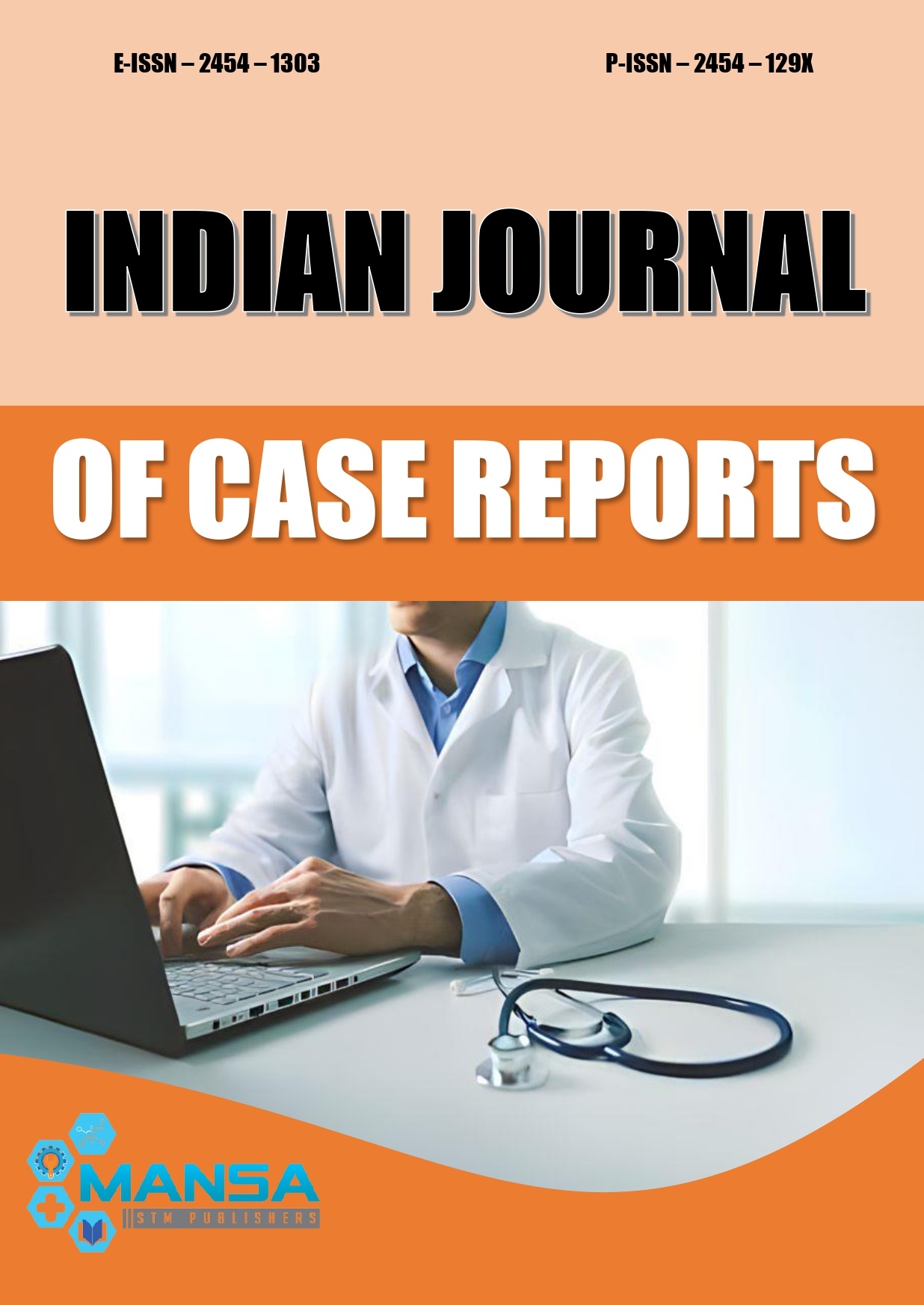Reversible cerebral vasoconstriction syndrome in the backdrop of cerebral venous thrombosis: A post-partum catastrophe
DOI:
https://doi.org/10.32677/IJCR.2018.v04.i05.010Keywords:
Cerebral venous thrombosis, Headache, Reversible cerebral vasoconstriction syndromeAbstract
Reversible cerebral vasoconstriction syndrome (RCVS) is an under-recognized condition characterized by the association of acute severe headaches, often of the thunderclap type, with or without additional neurological symptoms, and multifocal constriction of cerebral arteries, that resolve spontaneously within 1–3 months. Here, we report a rare case of post-partum stroke, where cerebral venous thrombosis was followed in quick succession by RCVS. A 24-year-old lady in her immediate post-partum period developed headache, seizure, and papilledema. After a subsequent episode of a severe headache, she had right hemiparesis and dysarthria. Computed tomography and magnetic resonance venography confirmed the presence of thrombosis. Afterward, she had another episode of a severe headache with altered sensorium. MR imaging of the brain revealed widespread infarct in bilateral medial frontal areas, and MR angiography was suggestive of segmental constriction of cerebral arteries bilaterally. The subsequent clinical course was uneventful with slow recovery. Repeat brain imaging, after 4 weeks, revealed near-total disappearance of diffusion restriction and subsidence of the beading pattern in the cerebral vasculature. This rare case depicts the co-occurrence of venous and arterial angiopathies in the setting of a post-partum headache with the stroke that led to a challenging clinical scenario.
Downloads
Downloads
Published
Issue
Section
License

This work is licensed under a Creative Commons Attribution-NonCommercial-NoDerivatives 4.0 International License.

